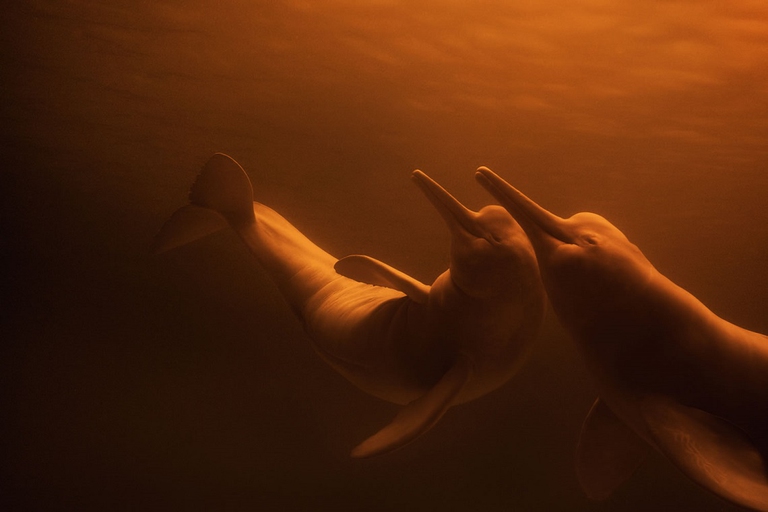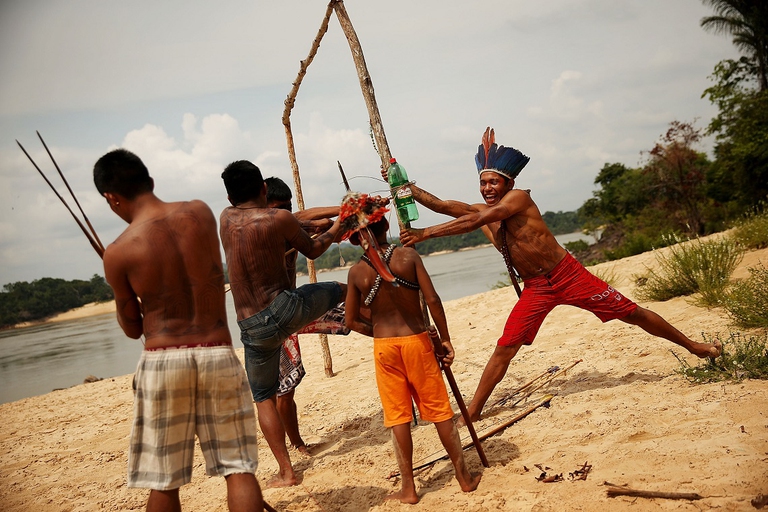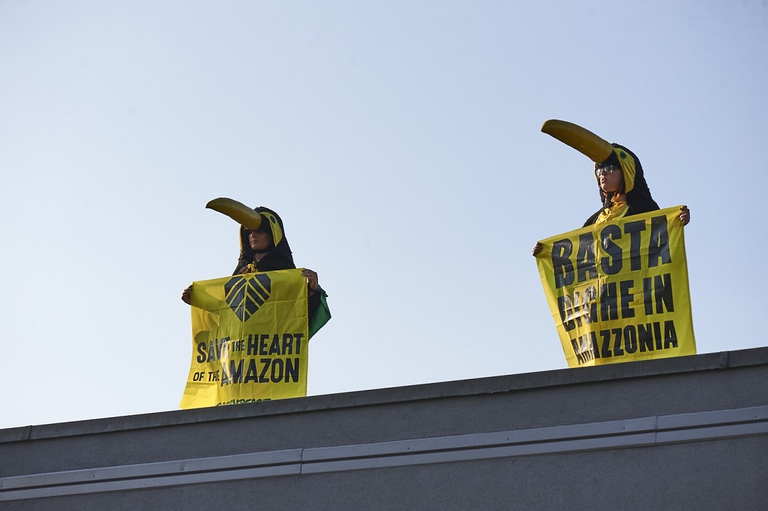
Three people putting the protection of the planet before themselves. Three powerful stories from Latin America, the deadliest region for environmental activists.
L’organizzazione ambientalista ha chiesto a Siemens di non partecipare al progetto di un’enorme diga idroelettrica nel cuore dell’Amazzonia brasiliana.
Siemens is one of the world’s biggest producers of wind turbines and is committed to making its supply chain sustainable. Yet, the German company could soon play a prominent role in the destruction of the Brazilian Amazon. Siemens is going to take part in a project for the construction of a huge hydroelectric dam on the Tapajós River, in the state of Pará, north-western Brazil.
The Tapajós River, which extends for 800 kilometres, crosses lands characterised by an extraordinary biodiversity and is home to a rare and mysterious creature, the Amazon River dolphin. The Brazilian Amazon is also home to a huge variety of animal and plant species, as well as to indigenous communities that live in harmony with the river and the forest.
The forest and the river, along with all the creatures depending on them, are now threatened by the Brazilian government’s plan to build 40 dams on the Tapajós River. The São Luiz do Tapajós hydrodam will be the largest, with a capacity of 8,040MW and a pool of 729 square kilometres. It will also threaten the survival of 12,000 people of the Munduruku indigenous tribe, which hasn’t been consulted as provided by the ILO-convention 169 (the Indigenous and Tribal People convention) and by Brazil’s constitution.
Earlier in May, Greenpeace asked Siemens to publicly dissociate itself from the project, but the company has never answered. So, the environmental association took action on 7 July by organising a demonstration at Siemens’ headquarters in Milano, Italy, and showing the photos of the damage caused by the Belo Monte dam. “We ask Siemens to not participate in the construction of the São Luiz do Tapajós dam and to speak up against the destruction of the Amazon,” said Martina Borghi of Greenpeace Italy. “Siemens shouldn’t make the same mistake of the Belo Monte dam and instead include forest protection in its innovative environmental portfolio”.
Siamo anche su WhatsApp. Segui il canale ufficiale LifeGate per restare aggiornata, aggiornato sulle ultime notizie e sulle nostre attività.
![]()
Quest'opera è distribuita con Licenza Creative Commons Attribuzione - Non commerciale - Non opere derivate 4.0 Internazionale.
Three people putting the protection of the planet before themselves. Three powerful stories from Latin America, the deadliest region for environmental activists.
Influential scientist, activist and author Vandana Shiva fights to protect biological and cultural diversity, and against GMOs.
Kimiko Hirata has blocked 13 new coal plants in Japan, but she hasn’t done it alone. The 2021 Goldman Prize winner tells us about her movement.
The Goldman Environmental Prize, the “green Nobel Prize”, is awarded annually to extraordinary activists fighting for the well-being of the planet.
We talk to Shaama Sandooyea, activist and marine biologist from Mauritius onboard Greenpeace’s Arctic Sunrise ship in the heart of the Indian Ocean.
Arrested for supporting farmers. The alarming detention of Disha Ravi, a 22-year-old Indian activist at the fore of the Fridays for Future movement.
Water defender Eugene Simonov’s mission is to protect rivers and their biodiversity along the borders of Russia, China and Mongolia.
Chibeze Ezekiel, winner of the 2020 Goldman Environmental Prize for Africa, is fighting to guide new generations towards a renewable future.
Leydy Pech, winner of the 2020 Goldman Environmental Prize for North America, is the beekeeper who defended Mexican Maya land against the agro-industry.










